Among metal materials, aluminum tubes have the characteristics of high strength, beautiful appearance, light weight, non-toxic, and odorless. They are often used in the cosmetics and pharmaceutical industries. As a printing material, metal has good processing lines and variety of styling designs. The printing effect is conducive to the unity of its use value and artistry.
metal printing
Printing on hard materials such as metal plates, metal containers (molded products), and metal foils. Metal printing is often not the final product, but also needs to be made into various containers, covers, building materials, etc.
01Features
①Bright colors, rich layers, and good visual effects.
②The printing material has good processability and diversity in styling design. (It can realize novel and unique styling designs, manufacture various special-shaped cylinders, cans, boxes and other packaging containers, beautify products and improve product competitiveness)
③It is conducive to realizing the unity of the use value and artistry of the product. (Metal materials have good performance and the wear resistance and durability of ink create conditions for realizing unique design and exquisite printing, improve the durability and maintainability of products, and are the unity of product use value and artistry)
02Printing method selection
Depending on the shape of the substrate, most of them use offset printing, because offset printing is indirect printing, relying on the elastic rubber roller to contact the hard substrate to complete the transfer of ink.
①Flat sheet (tinplate three-piece can)------offset printing
② Molded products (aluminum two-piece stamped cans) ----- letterpress offset printing (dry offset printing)
Precautions
First: For printing of metal materials, the direct printing method of directly imprinting the hard metal printing plate and the hard substrate cannot be used, and indirect printing is often used.
Second: It is mainly printed by lithographic offset printing and letterpress dry offset printing.
2. Printing materials
Printing on hard materials such as metal plates, metal containers (molded products), and metal foils. Metal printing is often not the final product, but also needs to be made into various containers, covers, building materials, etc.
01tinplate
(Tin plated steel plate)
The main printing material for metal printing is tin-plated on a thin steel plate substrate. The thickness is generally 0.1-0.4mm.
① Cross-sectional view of tinplate:
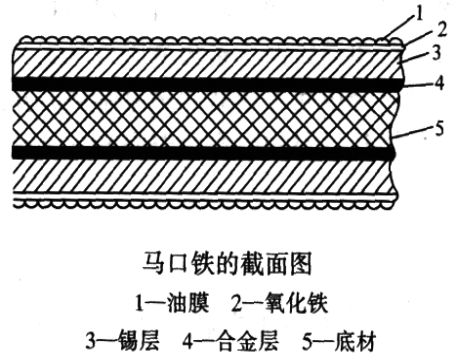
The function of the oil film is to prevent surface scratches caused by friction during stacking, bundling or transportation of iron sheets.
② According to different tin plating processes, it is divided into: hot dip plated tinplate; electroplated tinplate
02Wuxi thin steel plate
A steel plate that does not use tin at all. The protective layer is composed of extremely thin metal chromium and chromium hydroxide:
①TFS cross-section view
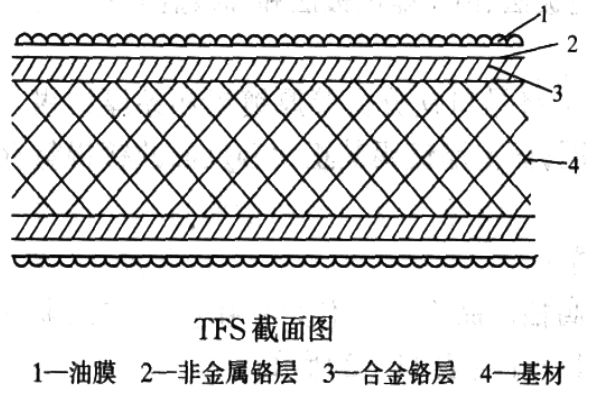
The metallic chromium layer can improve corrosion resistance, and chromium hydroxide fills the pores on the chromium layer to prevent rust.
②Notes:
First: The surface gloss of TFS steel plate is poor. If printed directly, the clarity of the pattern will be poor.
Second: When using, apply paint to cover the surface of the steel plate to obtain good ink adhesion and corrosion resistance.
03zinc iron plate
The cold-rolled steel plate is plated with molten zinc to form a zinc iron plate. Coating the zinc iron plate with colored paint becomes a colored zinc plate, which is used for decorative panels.
04Aluminum sheet (aluminum material)
①Classification
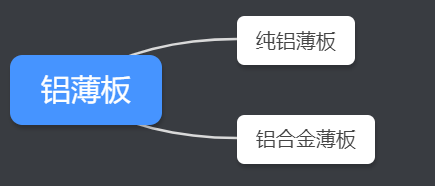
Aluminum sheets have excellent properties. At the same time, the surface reflectivity of the aluminum plate is high, the printability is good, and good printing effects can be obtained. Therefore, in metal printing, aluminum sheets are widely used.
②Main features:
Compared with tinplate and TFS steel plates, the weight is 1/3 lighter;
Does not produce oxides after coloring like iron plates;
No metallic odor will be produced due to the precipitation of metal ions;
The surface treatment is easy, and bright color effects can be obtained after coloring;
It has good heat transfer performance and light reflection performance, and has good covering ability against light or gas.
③Notes
After repeated cold rolling of aluminum plates, the material will become brittle as it hardens, so the aluminum sheets should be quenched and tempered.
When coating or printing, softening will occur due to rising temperature. The aluminum plate material should be selected according to the purpose of use.
3. Iron printing ink (paint)
The surface of metal substrate is smooth, hard and has poor ink absorption, so quick-drying printing ink must be used. Since packaging has many special requirements and there are many pre-printing and post-printing coating processing steps for metal containers, there are many types of metal printing inks.
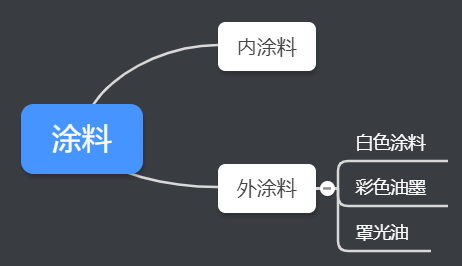
01Interior paint
The ink (coating) coated on the inner wall of the metal is called internal coating.
①Function
Ensure the isolation of metal from contents to protect food;
Cover the color of the tinplate itself.
Protect the iron sheet from corrosion by the contents.
②Requirements
The paint is in direct contact with the contents, so the paint is required to be non-toxic and odorless. It should be dried in a dryer after internal coating.
③Type
Fruit type paint
Mainly oily resin type connecting materials.
Corn and grain-based coatings
Mainly oleoresin type binder, with some small particles of zinc oxide added.
meat type coating
To prevent corrosion, phenolic resin and epoxy resin-type connecting materials are mainly used, and some aluminum pigments are often added to prevent sulfur pollution.
General paint
Mainly oleoresin type binder, with some phenolic resin added.
02Exterior coating
The ink (coating) used for printing on the outer layer of metal packaging containers is external coating, which is used to increase the appearance and durability.
① Primer paint
Used as a primer before printing to ensure good connection between the white ink and the iron sheet and improve the adhesion of the ink.
Technical requirements: The primer should have good affinity with the metal surface and ink, good fluidity, light color, good water resistance, and a coating thickness of about 10 μm.
②White ink - used to create white base
Used as a background color for printing full-page graphics and text. The coating should have good adhesion and whiteness, and should not turn yellow or fade under high-temperature baking, and should not peel or peel during the can-making process.
The function is to make the colored ink printed on it more vivid. Usually two or three coats are applied with a roller to achieve the desired whiteness. To avoid the possible yellowing of white ink during baking, some pigments, called toners, can be added.
③Colored ink
In addition to the properties of lithographic printing ink, it also has good resistance to high-temperature baking, cooking and solvent resistance. Most of them are UV iron printing ink. Its rheological properties are basically the same as those of lithographic ink, and its viscosity is 10~15s (coating: No. 4 cup/20℃)
4. Metal hose printing
Metal hose is a cylindrical packaging container made of metal material. It is mainly used for the packaging of paste-like items, such as special containers for toothpaste, shoe polish and medical ointments. Metal hose printing is a curved surface printing. The printing plate is a copper plate and a photosensitive resin plate, using a letterpress offset printing process: metal hoses mainly refer to aluminum tubes. The manufacturing and printing of aluminum tubes are completed on a continuous automatic production line. After hot stamping and annealing, the aluminum billet begins to enter the printing process.
01Features
The paste has a certain viscosity, is easy to adhere and deform, and is convenient to package with metal hoses. Its characteristics are: completely sealed, can isolate external light sources, air, moisture, etc., good freshness and flavor storage, easy processing of materials, high efficiency, filling The products are fast, accurate and low-cost, and are very popular among consumers.
02processing method
First, the metal material is made into a hose body, and then printing and post-printing processing are performed. The entire process from tube flushing, inner coating, primer to printing and capping is completed on a fully automatic tube production line.
03type
According to the materials making up the hose, there are three types:
①Tin hose
The price is high and it is rarely used. Only some special drugs are used due to the nature of the product.
②Lead hose
Lead is toxic and harmful to the human body. It is now rarely used (almost banned) and is only used in products containing fluoride.
③Aluminum hose (most widely used)
High strength, beautiful appearance, light weight, non-toxic, tasteless and low price. It is widely used in the packaging of cosmetics, high-end toothpaste, pharmaceuticals, food, household products, pigments, etc.
04printing art
The process flow is: printing background color and drying - printing graphics and text and drying.
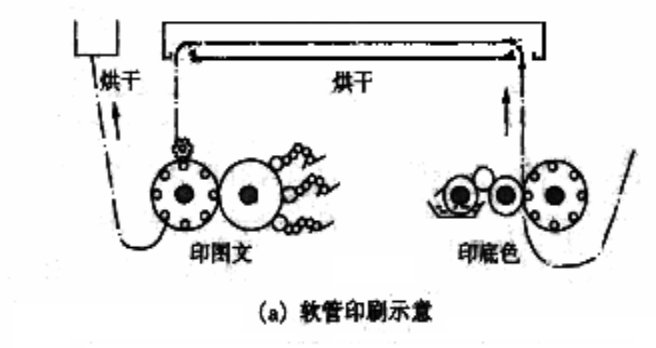
The printing part uses a satellite structure and is equipped with a base color and drying device. The base color printing mechanism is separated from other mechanisms, and an infrared drying device is installed in the middle.
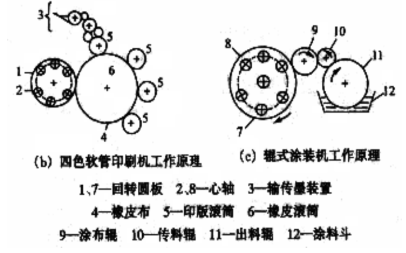
①Print background color
Use white primer to print the base color, the coating is thicker, and the surface is flat and smooth. For special effects, the background color can be adjusted to different colors, such as pink or light blue.
②Drying the background color
Put it into a high-temperature oven for baking. The hose will not turn yellow after drying but should have a little stickiness on the surface.
③Printing pictures and text
The ink transfer device transfers the ink to the relief plate, and the graphic and text ink of each printing plate is transferred to the blanket. The rubber roller prints the graphic and text on the outer wall of the hose at one time.
Hose graphics and text are generally solid, and multi-color overprints do not overlap each other. The rubber roller rotates once to complete the printing of multiple hoses. The hose is placed on the mandrel of the rotating disc and does not rotate on its own. It only rotates through friction after contact with the rubber roller.
④Printing and drying
The printed hose must be dried in an oven, and the drying temperature and time must be selected according to the antioxidant properties of the ink.
Post time: May-15-2024

